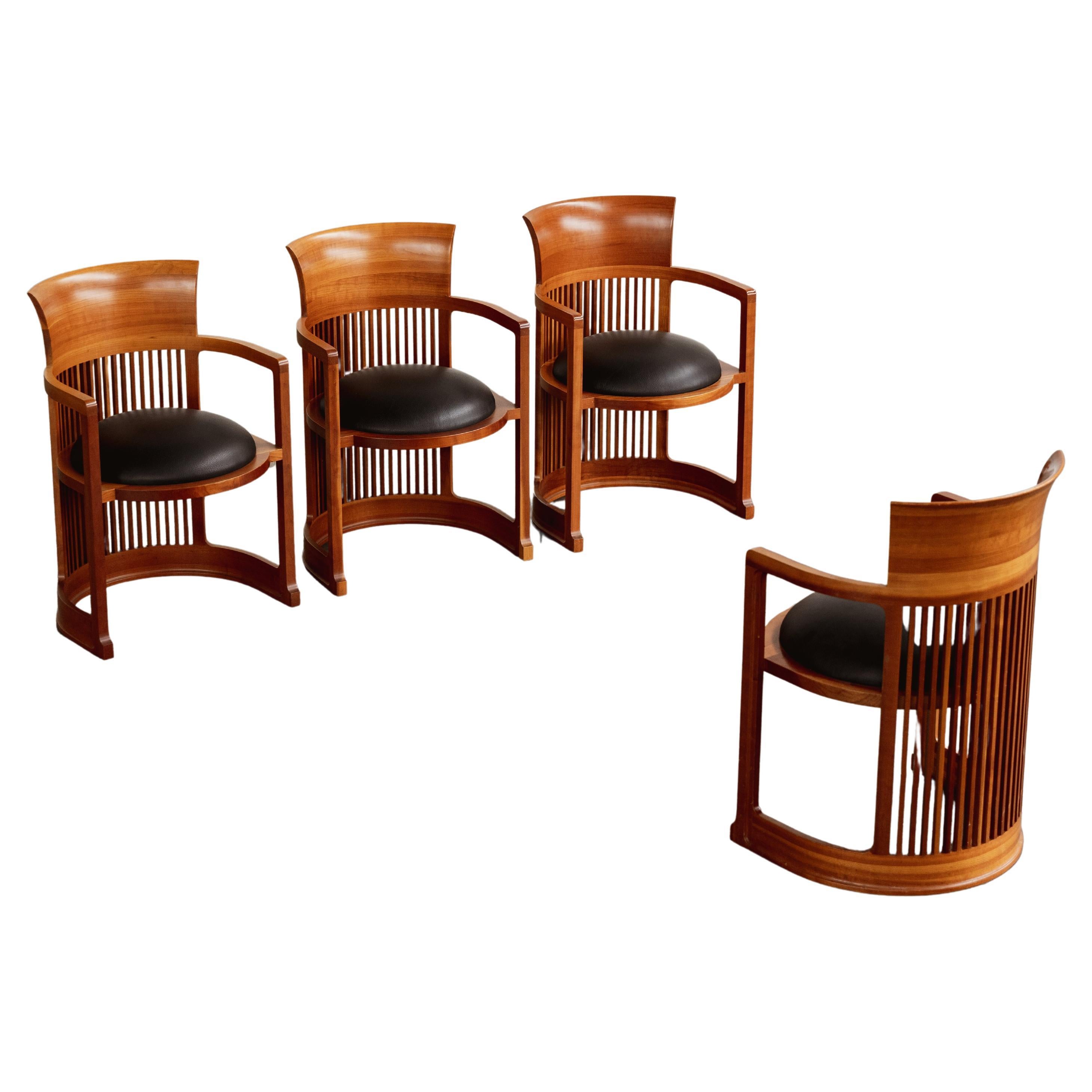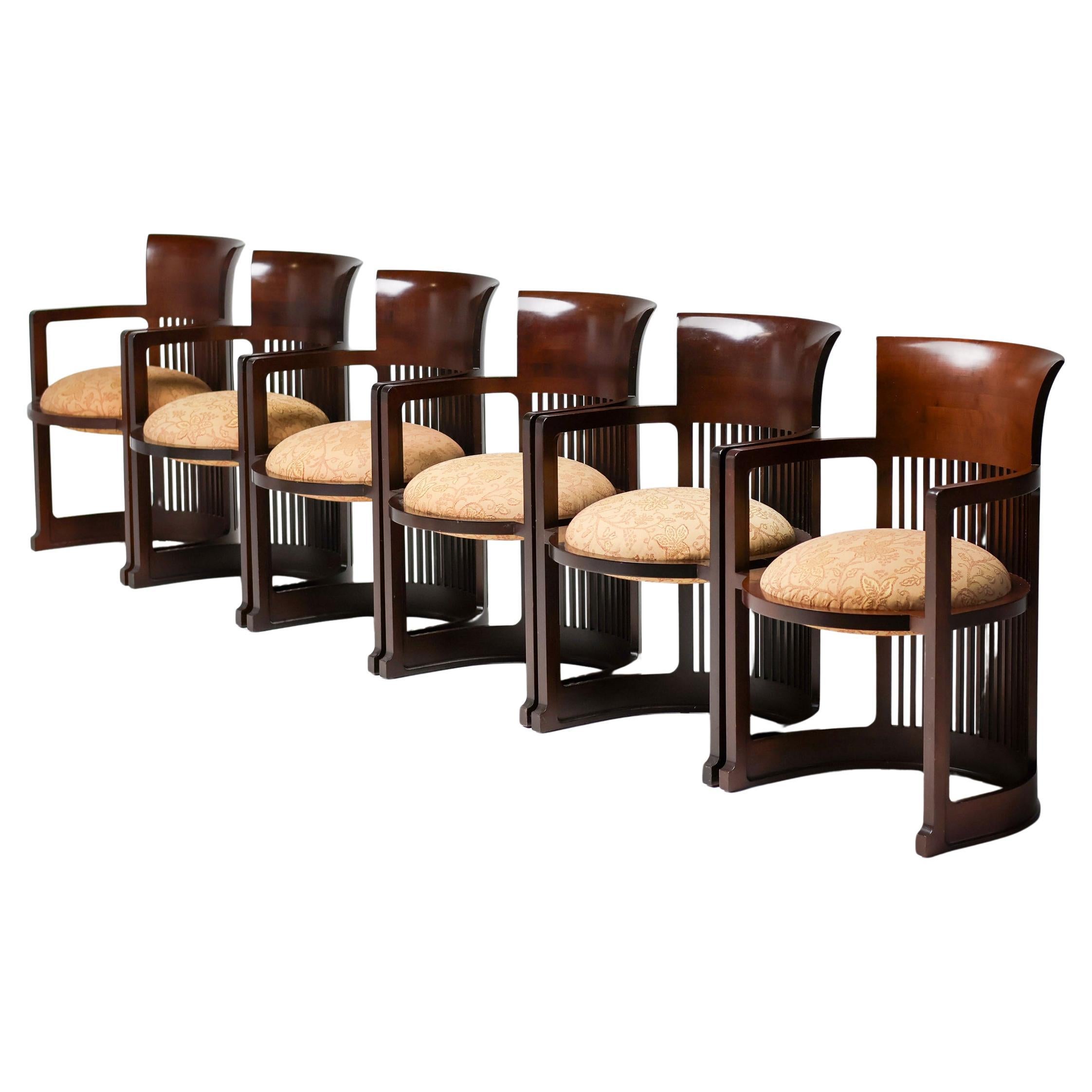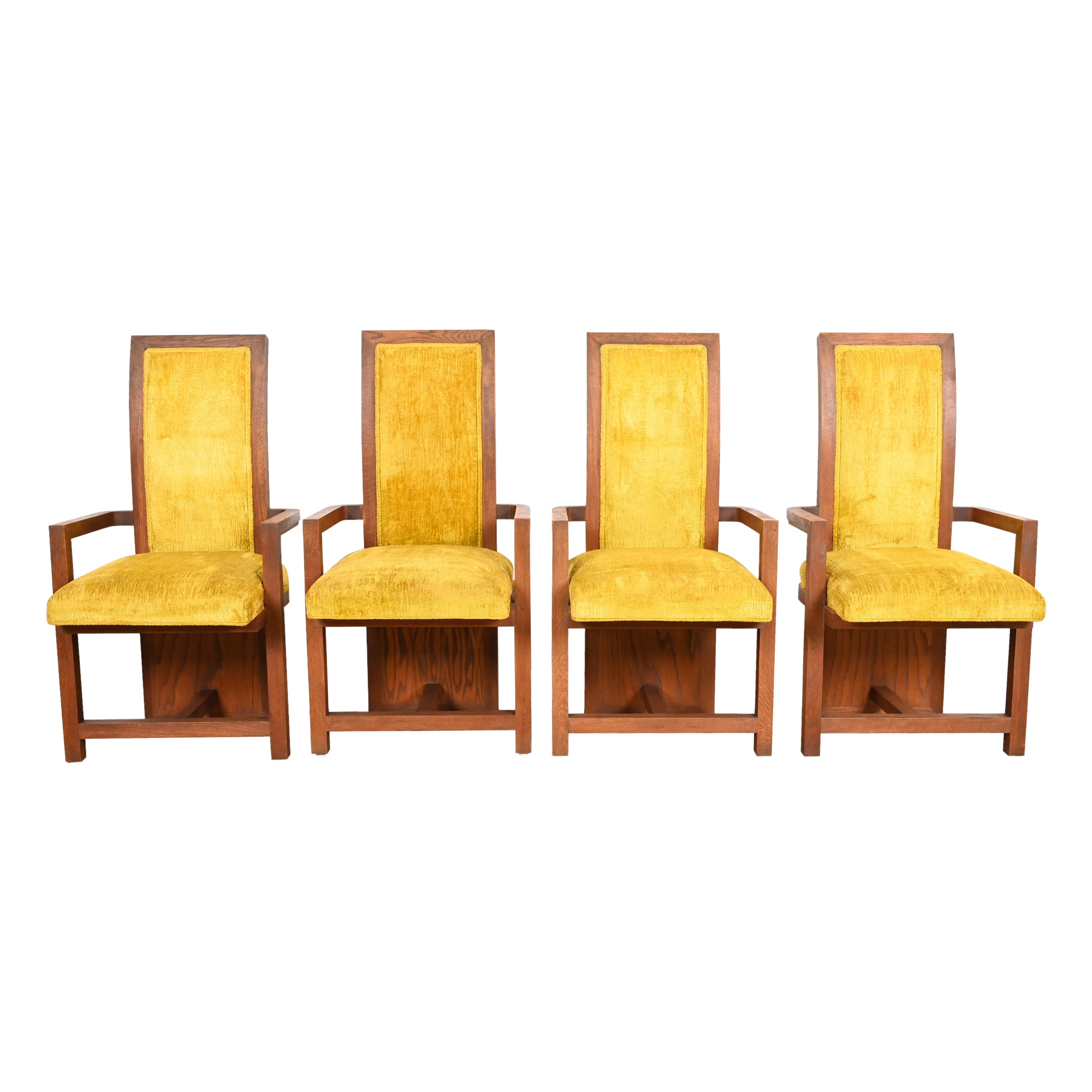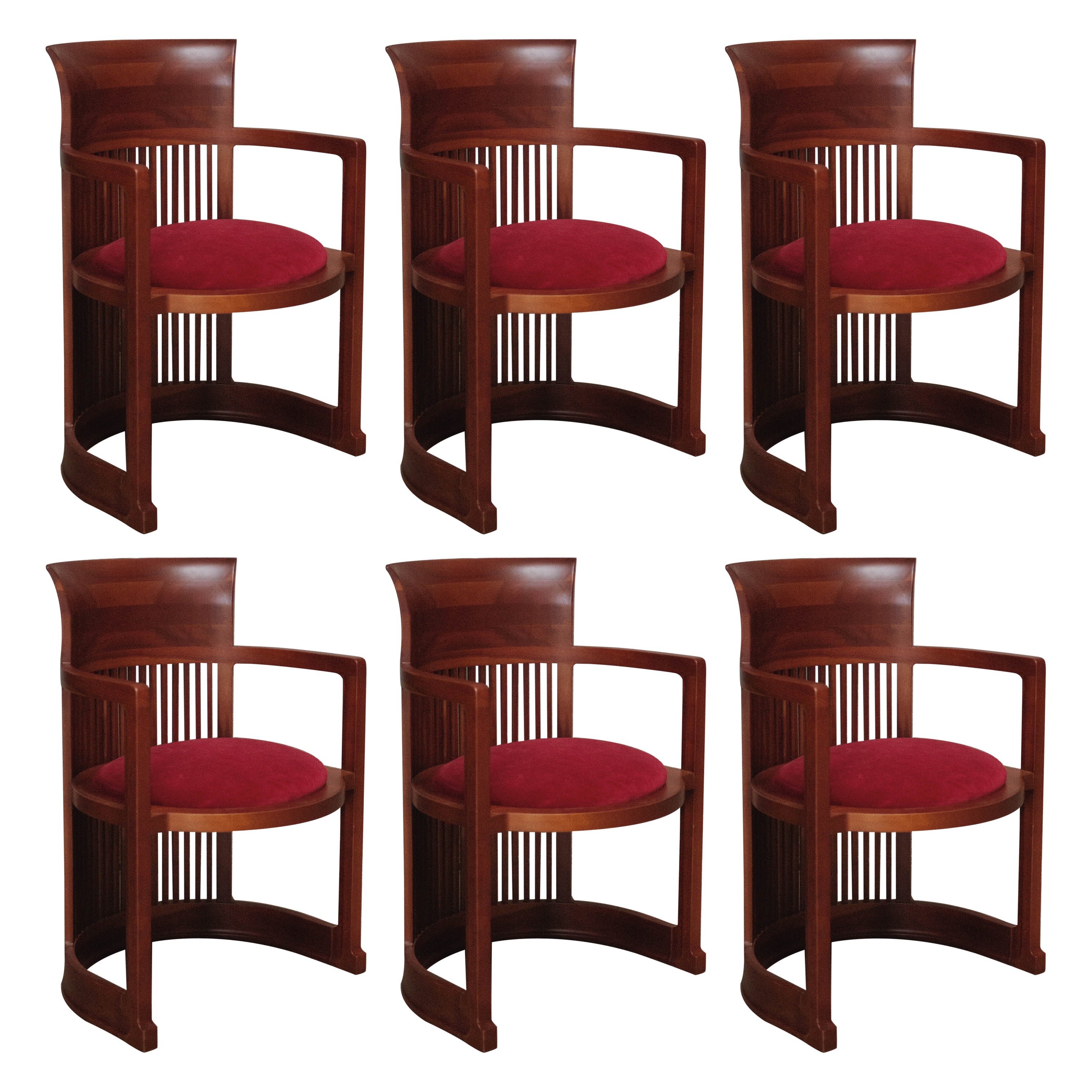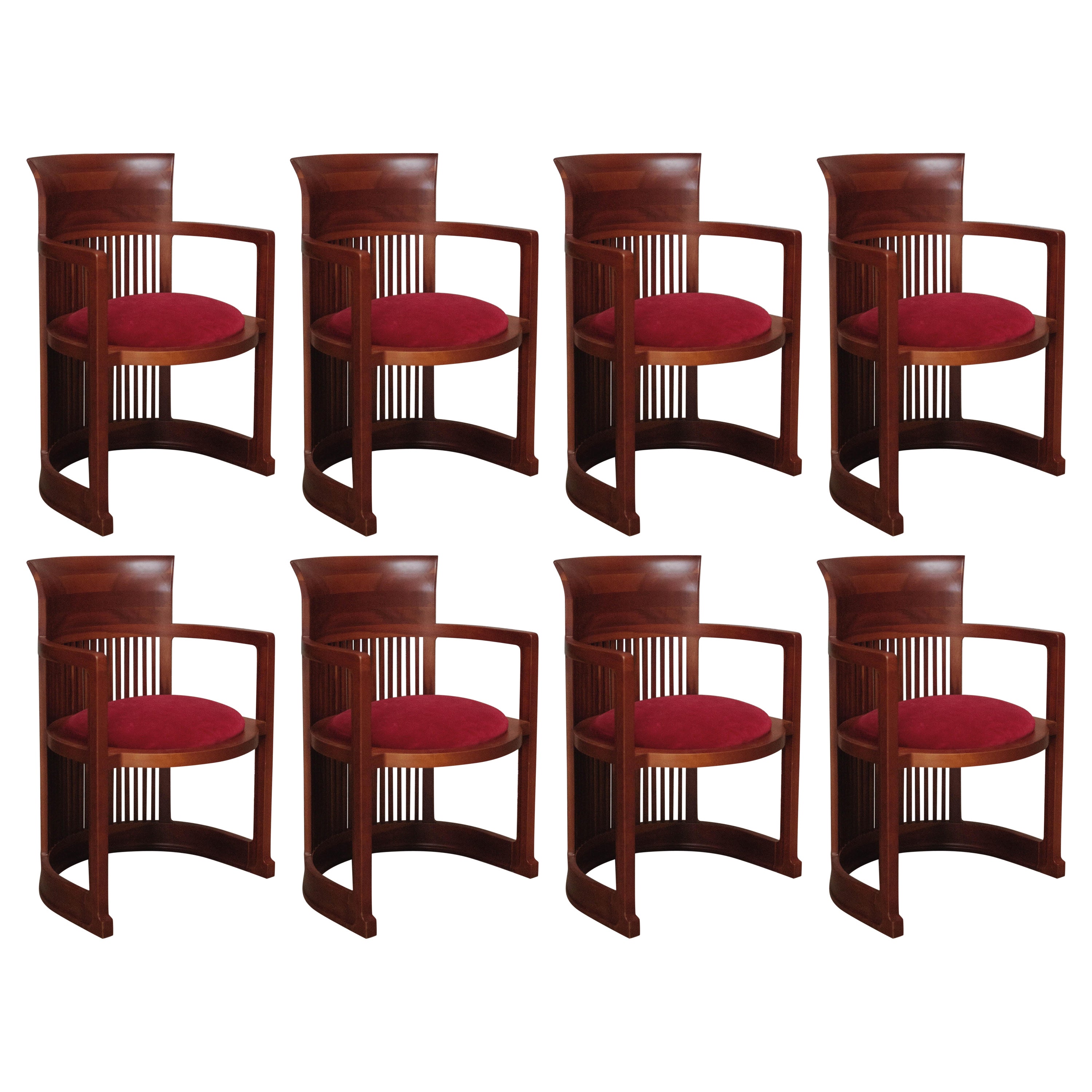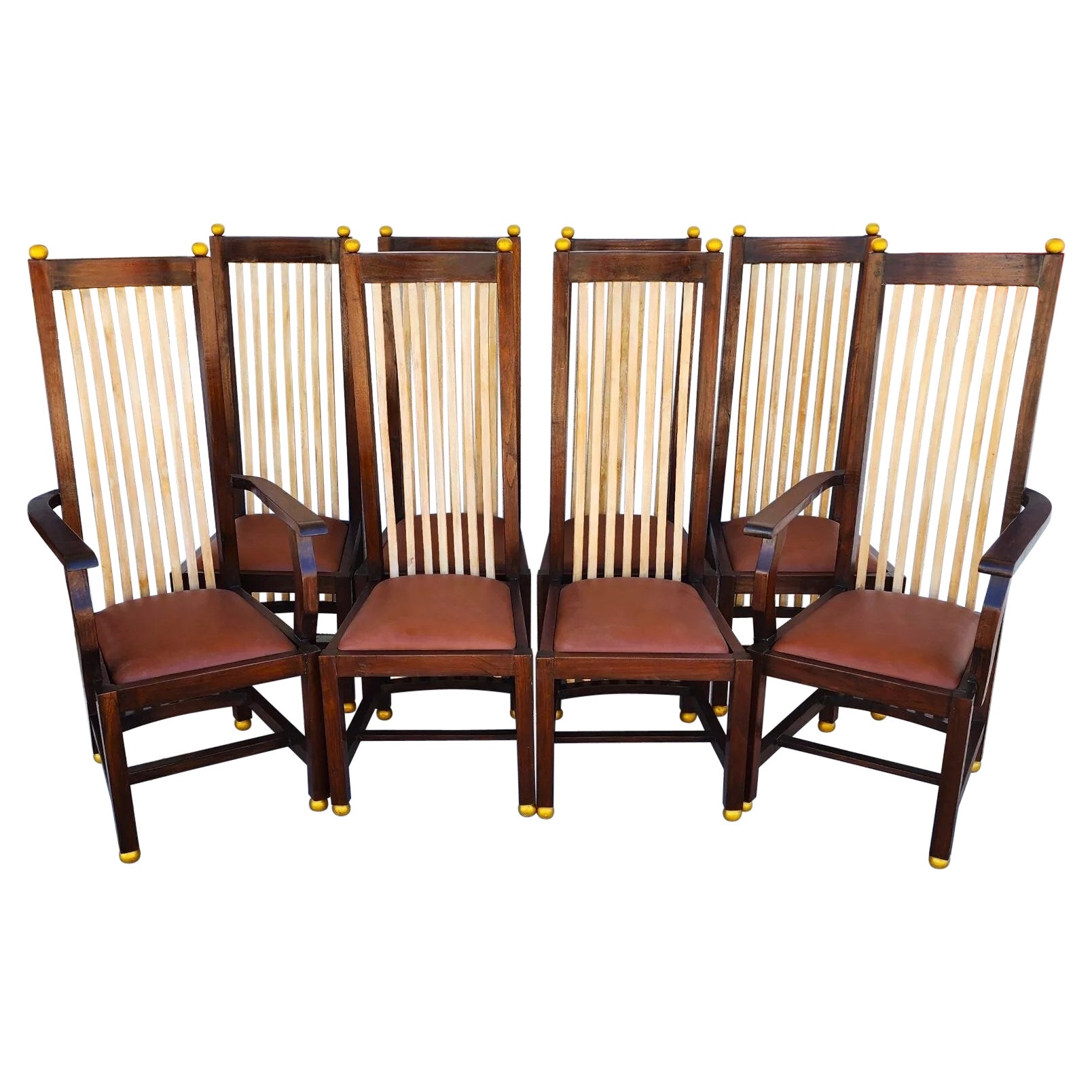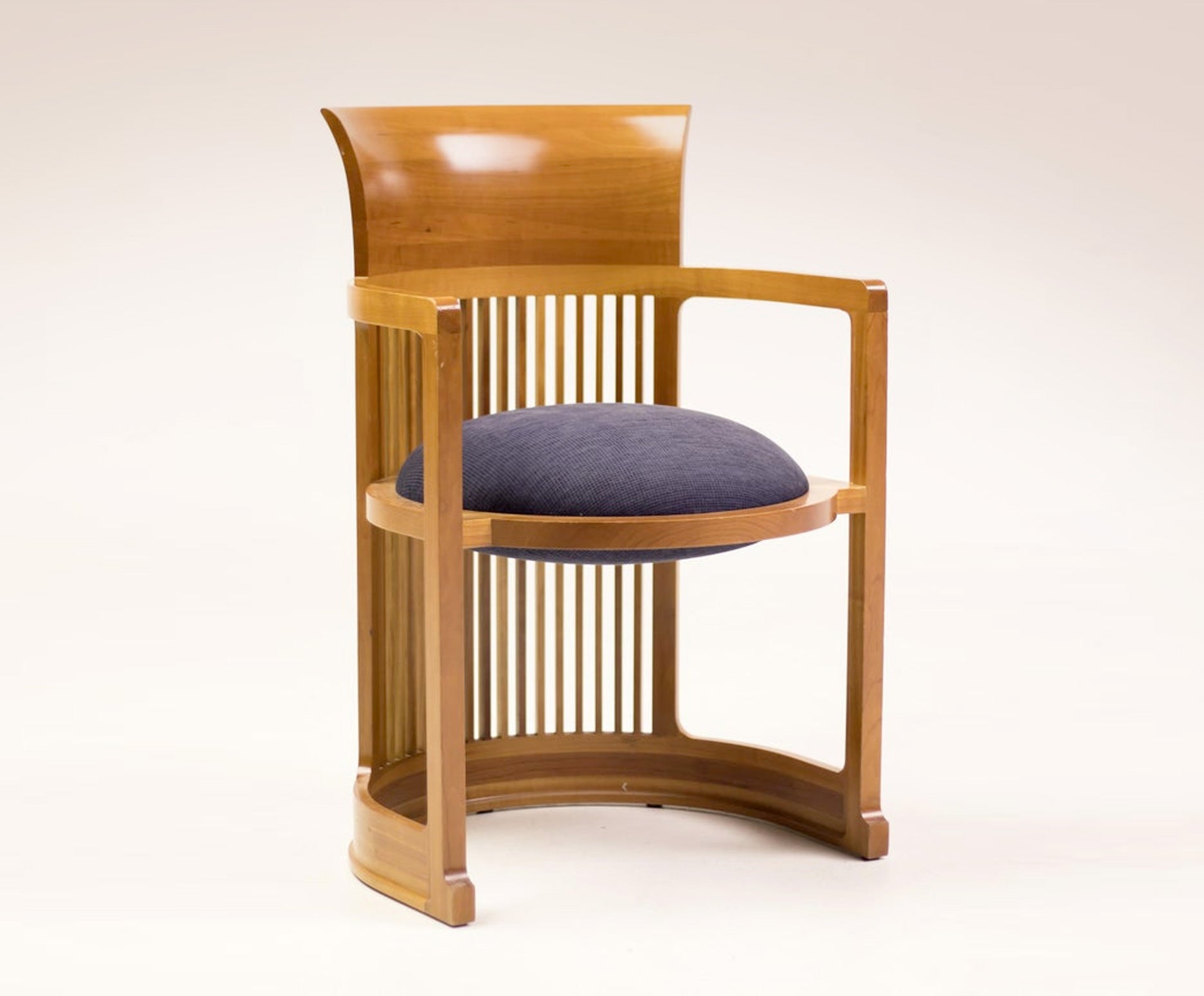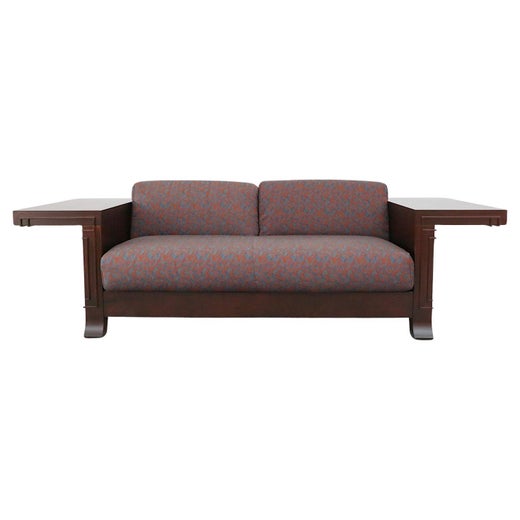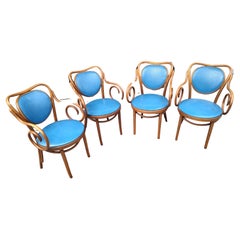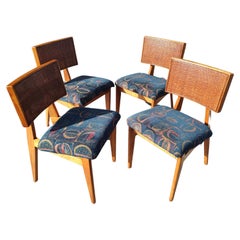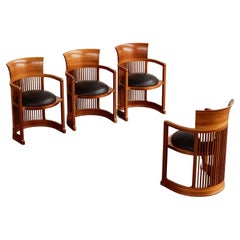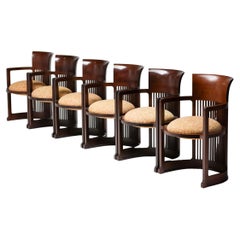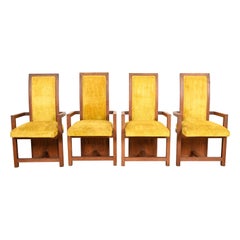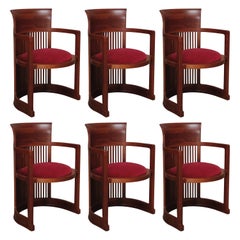Mid-Century Modern Arts & Crafts Set of 4 Frank Lloyd Wright Chairs by Cassina
About the Item
- Creator:Cassina (Manufacturer),Frank Lloyd Wright (Designer)
- Design:
- Dimensions:Height: 31.75 in (80.65 cm)Width: 21.5 in (54.61 cm)Depth: 20.5 in (52.07 cm)Seat Height: 18.25 in (46.36 cm)
- Sold As:Set of 4
- Style:Arts and Crafts (In the Style Of)
- Materials and Techniques:
- Place of Origin:
- Period:1980-1989
- Date of Manufacture:1986
- Condition:
- Seller Location:Port Jervis, NY
- Reference Number:1stDibs: LU958631837622
Taliesin Barrel Chair
Before the Taliesin Barrel chair, the furniture designed by American architect Frank Lloyd Wright (1867–1959) was largely characterized by its angles and lines. Much like the houses the furniture was made to inhabit, this early work, with its decorative angular shapes carved in wood, was inspired by the traditional craftsmanship and rejection of industrial production methods that typified the Arts and Crafts movement.
The 1902 high-back dining chair that Wright designed for the Ward Willits House in Highland Park, Illinois, has a screen-like tower of linear slats; sharp-edged geometric forms were embedded in the furnishings for the Oak Park, Illinois, studio that the revered architect and furniture maker began building in 1899. When Wright was working on the Darwin D. Martin House in Buffalo, New York, between 1903 and 1905, he introduced curves into his Prairie School style rectangular aesthetics, which materialized in the cylindrical body of the Barrel chair.
An elegant embrace of wooden arms enclose the graceful flare on the chair’s back as well as its double-sided circular seat. In 1937, Wright reimagined and enlarged the frame of this square-spindled chair for Wingspread, the Racine, Wisconsin, home of Herbert F. Johnson. As in Wright’s architecture — from the hundreds of homes to monumental buildings, such as the spiraling Solomon R. Guggenheim Museum in New York — the chairs demonstrate an appreciation for natural materials and the intersection of basic geometric shapes. Wright also used the Taliesin Barrel chair to furnish his own home in Wisconsin, which is where it got its name. Authorized reproductions of the Barrel chair are now sold by Cassina.
Frank Lloyd Wright
Without question the greatest architect the United States has ever produced, Frank Lloyd Wright and his philosophy of “organic architecture” — of buildings that exist in harmony with their natural surroundings — had a profound influence on the shape of modern life.
Wright gave us some of the most elegant and iconic buildings in America: residences such as Fallingwater, in rural Pennsylvania, the Robie House in Chicago, and Taliesin, Wright’s own home; and masterful institutional structures that include the Unity Temple in Oak Park, Illinois, the Johnson Wax headquarters in Racine, Wisconsin, and the Guggenheim Museum in New York. Whenever possible, Wright designed the furniture for his projects, to ensure an affinity between a building’s exterior and interior.
Wright’s wooden chairs and tables for his “Prairie Houses” of the early 1900s have sleek, attenuated forms, influenced by both the simplicity of traditional Japanese design and the work of Gustav Stickley and other designers of the Arts and Crafts movement.
For Taliesin and several residential projects, Wright designed severely geometric chairs that are marvels of reductivist design. He revisited many of these forms in the 1950s in furniture licensed to the North Carolina firm Henredon, adding a decorative frieze-like element to the edges of tables and stools. Owing to a cross-licensing agreement between Henredon and Heritage at the time, Wright's lines of the era are usually labeled Heritage-Henredon.
The works on 1stDibs also show how happily Wright embraced new forms and materials. His desks and chairs for Johnson Wax have a streamlined look and use tubular steel to the same effect as designer Warren McArthur, who collaborated with Wright in the interiors of the Arizona Biltmore Hotel. For the Price Tower (1956) in Oklahoma, Wright designed angular wooden desks as well as upholstered pedestal chairs made of chromed steel — audacious furniture for his tallest completed building project.
The beauty of Frank Lloyd Wright’s furniture designs is that while many of us wish we could live in one of his houses, his vintage sofas, storage cabinets and armchairs connect us directly to his architecture, and to the history he made.
- ShippingRetrieving quote...Shipping from: Port Jervis, NY
- Return Policy
More From This Seller
View AllVintage 1970s Polish Modern Dining Room Chairs
Naugahyde, Beech
Vintage 1960s Danish Scandinavian Modern Dining Room Chairs
Fabric, Rosewood
Vintage 1960s American Mid-Century Modern Dining Room Chairs
Fabric, Walnut
Vintage 1940s American Mid-Century Modern Dining Room Chairs
Fabric, Beech, Cane
Vintage 1950s American Mid-Century Modern Dining Room Sets
Laminate, Oak, Fabric
Vintage 1970s Italian Mid-Century Modern Dining Room Chairs
Steel, Chrome
You May Also Like
Vintage 1930s Italian Mid-Century Modern Chairs
Wood, Leather
20th Century American Mid-Century Modern Dining Room Sets
Wool, Cherry
Vintage 1950s American Mid-Century Modern Dining Room Chairs
Upholstery, Oak
Vintage 1930s Italian Mid-Century Modern Chairs
Velvet, Wood
Vintage 1930s Italian Mid-Century Modern Chairs
Velvet, Wood
Vintage 1970s Mid-Century Modern Dining Room Chairs
Wood
Read More
The 21 Most Popular Mid-Century Modern Chairs
You know the designs, now get the stories about how they came to be.
Billy Cotton Layers His Interiors with Lived-In Comfort
The Brooklyn-based designer is adept at styles ranging from austere to over-the-top, espousing an architectural, detail-oriented approach also evident in his line of furniture and lighting.
